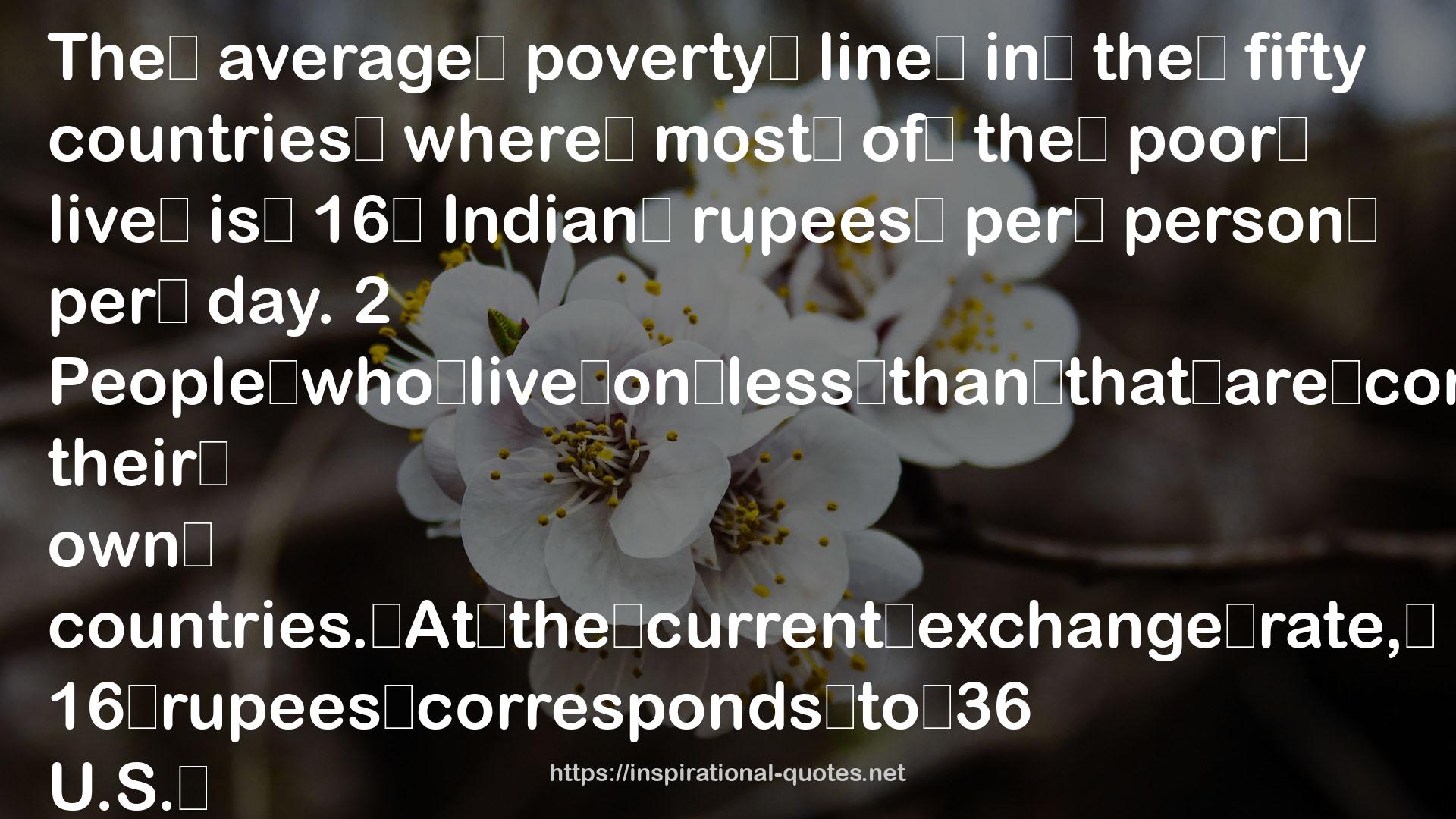" The average poverty line in the fifty
countries where most of the poor live is 16 Indian rupees per person per day. 2
People who live on less than that are considered to be poor by the government of
their own countries. At the current exchange rate, 16 rupees corresponds to 36
U.S. cents. But because prices are lower in most developing countries, if the
poor actually bought the things they do at U.S. prices, they would need to spend
more—99 cents. So to imagine the lives of the poor, you have to imagine having
to live in Miami or Modesto with 99 cents per day for almost all your everyday
needs (excluding housing). It is not easy—in India, for example, the equivalent
amount would buy you fifteen smallish bananas, or about 3 pounds of low-
quality rice. Can one live on that? And yet, around the world, in 2005, 865
million people (13 percent of the world’s population) did. "
― Abhijit V. Banerjee , Poor Economics: A Radical Rethinking of the Way to Fight Global Poverty
